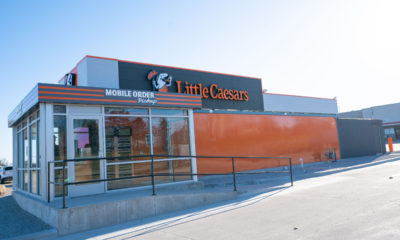In an age of abundant resources and oversaturation of information, I find it difficult to keep up with the warp speed at which the next generations seem to be tackling and consuming life. I must admit, I felt out of place when I recently found out that I do, in fact, fall into the tail-end of the millennial generation. However, I don’t feel like a millennial. I still read the newspaper in the morning, most days I run without a gadget on my wrist and the face ID recognition on my phone gives me goosebumps.
All of this has got me wondering about which characteristics of this game-changing demographic I’ve adopted without realizing it. Upon reflection, I discovered that many traits of emerging generations are creating major cultural shifts for all generational groups. In a more financially aware culture, consumers are choosing with their dollars, and the balance between work and play is becoming blurred. The demand for integration is only growing, and convenience plays into our daily routine on a whole new level.
As a designer involved in the retail sector, I’ve noticed the adoption of these cultural shifts are changing retail environments in important ways. The brick-and-mortar retailer is emerging as a much more dynamic and experimental entity as opposed to a collection of spaces focused on maximum inventory and linear feet of display. In recent years, the industry has shifted to focus on what provides people with an experience that enhances their lifestyle.
Example of these key trends include store layouts and designs that engage the senses while also reinforcing brand identity. Recent interiors for Bonpoint in New York City, as just one example, utilize layouts, colors and materials to encourage engagement. The Paris-based children’s clothing company favors interactive experiences for customers and their children, using different furniture, color palettes and product presentation in various sections dedicated to boys, girls and infants.
Many stores are also introducing new program elements to draw people into stores and create a sense of community around the brand, lending to identity reinforcement. With the introduction of the online shopping experience, retailers are reinventing the role a brick-and-mortar store plays in marketing and brand strategy. Now, many retailers are less interested in the quantity of locations and are focused on larger footprints in strategic locations.
Flexible layouts, which support the dynamic use of space for new product launches, hosting classes and expansion of amenities, are also becoming increasingly popular. These make store environments ideal places for brands to create or strengthen personal connections with customers that may only know them online. For lifestyle retailers, like the French clothing brand Cremieux, which opened its first standalone retail spaces in New York, the experiential design is critical for opportunities to turn brand identity into something consumers actually experience as a setting for immersing themselves.
Advertisement
For Cremieux, the design ultimately became a part of immersing consumers in the lifestyle experience of the SoHo neighborhood, using an artist’s loft aesthetic, including exposed brick. The classic urban, industrial aesthetic underscores Cremieux’s high-end, urbane presentations.
In this way, the role of the physical store is becoming an experimental space for brands to test new ideas and create connections through live experiences. With the introduction of virtual reality (VR) and augmented reality (AR) into the personalized shopping experience, retailers are taking advantage of their strong following to connect that community to their store’s personalized and curated shopping experiences. It is an exciting time to be a merchant, yes – and also a consumer.
As a project manager and an associate at Spacesmith, Drew Miller, Assoc. AIA, has steered several projects in the retail sector nationwide for clients such as Hermès of Paris, Ladurée and Bonpoint. Drew understands the importance of brand and always seeks to find an efficient, holistic approach to ensure a positive and successful outcome for all end users. Drew continues his passion for exploration by competing in triathlons and ultra-running events all around the country. When he’s not at work, he is often found weaving through the streets of New York City on foot, exploring.


 Headlines1 week ago
Headlines1 week ago
 Headlines1 week ago
Headlines1 week ago
 Headlines1 week ago
Headlines1 week ago
 Designer Dozen2 weeks ago
Designer Dozen2 weeks ago
 Headlines6 days ago
Headlines6 days ago
 Headlines2 weeks ago
Headlines2 weeks ago
 Headlines3 days ago
Headlines3 days ago














